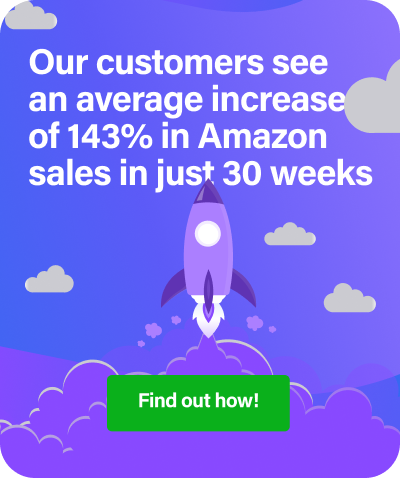Guest post by Manish from E2M Solutions
Perhaps the best way to survive as a small Amazon business today is to have a hearty and effective Amazon SEO strategy. Furthermore, it is one of the only ways that ecommerce brands can compete with Amazon sellers in today’s digital marketplace.
However, getting your business’s name on the first page of Google SERPs is an incredibly difficult challenge – that no amount of hard work or strategic keyword placement can ever guarantee.
Google’s ranking algorithm policy is infamously complex and secretive. However, there are some key rules that all e-commerce businesses should follow to ensure that their brand name becomes more visible on the organic search pages.
Here are four simple – but highly effective – SEO tips that can have a major impact on your business’s online visibility and boost web traffic significantly.
1. Consider a Content Rebrand for Better Keywords
Keyword inclusion is obviously one of the best ways to boost your website’s visibility. The keywords that are included in your website’s content are what connect you to organic searches. Failure to include the kind of keywords that relevant users are using could lead to lost opportunities, and ultimately, hurt your revenue.
Take a look at the details of your business that could be hurting your SEO. Remember that on-page signals such as keywords in the titles, descriptions, and internal link anchors matter, too. Be sure that your pages are tagged and structured correctly for keyword optimization. You may even want to come up with some new business name ideas that will match up to better keyword searches, or consider rewriting homepage copy and product descriptions.
2. Incorporate Customer Reviews
Many consumers today base their decision to purchase from an online store on the sentiment from customer reviews. Since the majority of customers these days are actively searching for reviews when they are considering a new business, you should be using feedback as a key part of your SEO strategy.
It is also important to note that according to the latest research findings on Google’s ranking factors, the keyword inclusion from reviews and the presence of recent and frequent consumer feedback make up about 15% of the signals determining your website’s ranking.
Be sure that you are actively displaying reviews throughout your own website as well as other third-party reviews sites, such as Yelp, Google, and even Facebook. Do your best to collect super detailed reviews from your customers – you may even want to include extra incentives for uploaded pictures or shares to social media pages.
It is also a good idea here to gather reviews for individual products if possible, rather than just a general review. By posting more detailed and specific reviews throughout your website, it will boost the number of feedback-related keywords that customers may be searching for.
3. Be Sure Your Mobile Version is Optimised
More customers are using their phones to shop than ever before. Your site’s mobile version needs to operate just as well as the desktop. If your website is not mobile-friendly, it could do more than just lose you a majority of your customers – it could deeply affect your website’s reputation and ranking.
One of Google’s recent algorithm updates indicates that websites optimised for mobile use will have better search result signals than others. Since usability can impact your rankings, be on the lookout for ways to improve your site’s mobile UX. You can even use Google’s Mobile-Friendly Test tool to see which areas could use improvement.
4. Formulate Blog Content around Keyword Research
If it has been a while since you’ve conducted any keyword research for your specific industry or product, it may be time for a content refresh. Keyword popularity changes all of the time, and customers may be looking for new specific keywords that are not currently included on your website.
Instead of creating content that you think will be relevant to your audience and including some keywords wherever possible, the better approach is to base your content subjects around trending keywords and questions. Pay special attention to the long-tail keyword searches that your customers are entering. In general, most people will phrase their queries as a question because they are looking for an answer. Ahref’s new Questions feature in the Keyword Explorer tool can be extremely helpful here.
By doing this, your content can answer questions related to search intent and provide people with the information they need.
In order to signal this to Google, it is important that you are also utilizing LSI (latent semantic indexing) keywords that provide context clues. Essentially, this means that your content includes the kind of keywords that provide clarification and help Google understand the overall subject of your content.
For instance, if a customer places a search query like “iPhone case” and your website sells this type of product. Google will search your website for context clue keywords (LSI) like “Apple” and “phone case” to ensure that you are selling the product that the user is looking for.
Conclusion
Boosting your website’s presence is a surefire way to attract more traffic and more conversions. However, getting your online brand’s name towards the top of the SERPs list is a major challenge, and unfortunately, no amount of tips or tricks can guarantee a top spot.
By making these improvements and focusing on keywords and content creation around search intent, you can optimize your website and send better ranking signals to Google which could influence your brand’s visibility overall.
Related: 21 Ways to Rank Your Products Higher on Amazon



